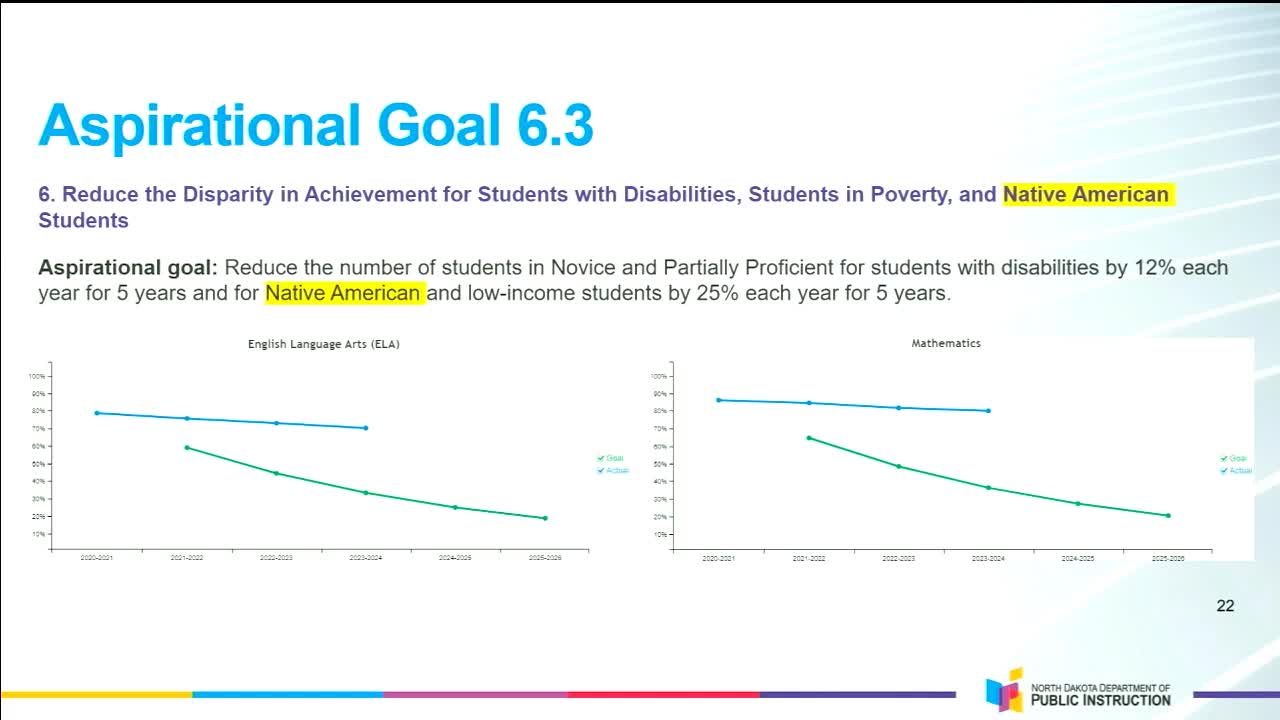North Dakota sees surge in Native American student graduation rates post-pandemic recovery
January 08, 2025 | Education, House of Representatives, Legislative, North Dakota
This article was created by AI summarizing key points discussed. AI makes mistakes, so for full details and context, please refer to the video of the full meeting. Please report any errors so we can fix them. Report an error »

North Dakota's education leaders are taking significant steps to enhance student achievement, particularly among Native American students, who represent 11% of the state's student population. During a recent House Education meeting on January 8, 2025, officials highlighted the impressive recovery of graduation rates for Native American students, which soared from 52% in 2013 to 89% just before the pandemic. However, the transition to remote learning during the pandemic posed challenges, as many Native American students attended schools that remained closed longer, impacting their academic progress.
The meeting underscored the importance of maintaining support systems for these students, as their success is crucial not only for their communities but also for the state's economy. Education leaders emphasized the need to "double down" on efforts to ensure that all students achieve their potential, noting that low graduation rates among Native American students can have broader implications for North Dakota's GDP and overall prosperity.
In addition to discussions on graduation rates, the meeting addressed school approval requirements for both public and non-public institutions in North Dakota. Unlike many states, North Dakota does not require school accreditation; instead, schools must meet specific approval criteria, including having licensed teachers, adhering to curricular requirements, and ensuring safety standards. Public schools are also required to engage in a continuous improvement process aimed at enhancing student achievement.
The shift from input-based accreditation to outcome-focused assessments reflects a broader commitment to improving educational results. This approach aims to foster a culture of accountability and continuous improvement within schools, ensuring that all students receive the quality education they deserve.
As North Dakota moves forward, the focus remains on supporting its diverse student population and enhancing educational outcomes, particularly for those who have historically faced barriers to success. The commitment to these goals will be critical in shaping the future of education in the state.
The meeting underscored the importance of maintaining support systems for these students, as their success is crucial not only for their communities but also for the state's economy. Education leaders emphasized the need to "double down" on efforts to ensure that all students achieve their potential, noting that low graduation rates among Native American students can have broader implications for North Dakota's GDP and overall prosperity.
In addition to discussions on graduation rates, the meeting addressed school approval requirements for both public and non-public institutions in North Dakota. Unlike many states, North Dakota does not require school accreditation; instead, schools must meet specific approval criteria, including having licensed teachers, adhering to curricular requirements, and ensuring safety standards. Public schools are also required to engage in a continuous improvement process aimed at enhancing student achievement.
The shift from input-based accreditation to outcome-focused assessments reflects a broader commitment to improving educational results. This approach aims to foster a culture of accountability and continuous improvement within schools, ensuring that all students receive the quality education they deserve.
As North Dakota moves forward, the focus remains on supporting its diverse student population and enhancing educational outcomes, particularly for those who have historically faced barriers to success. The commitment to these goals will be critical in shaping the future of education in the state.
View full meeting
This article is based on a recent meeting—watch the full video and explore the complete transcript for deeper insights into the discussion.
View full meeting
